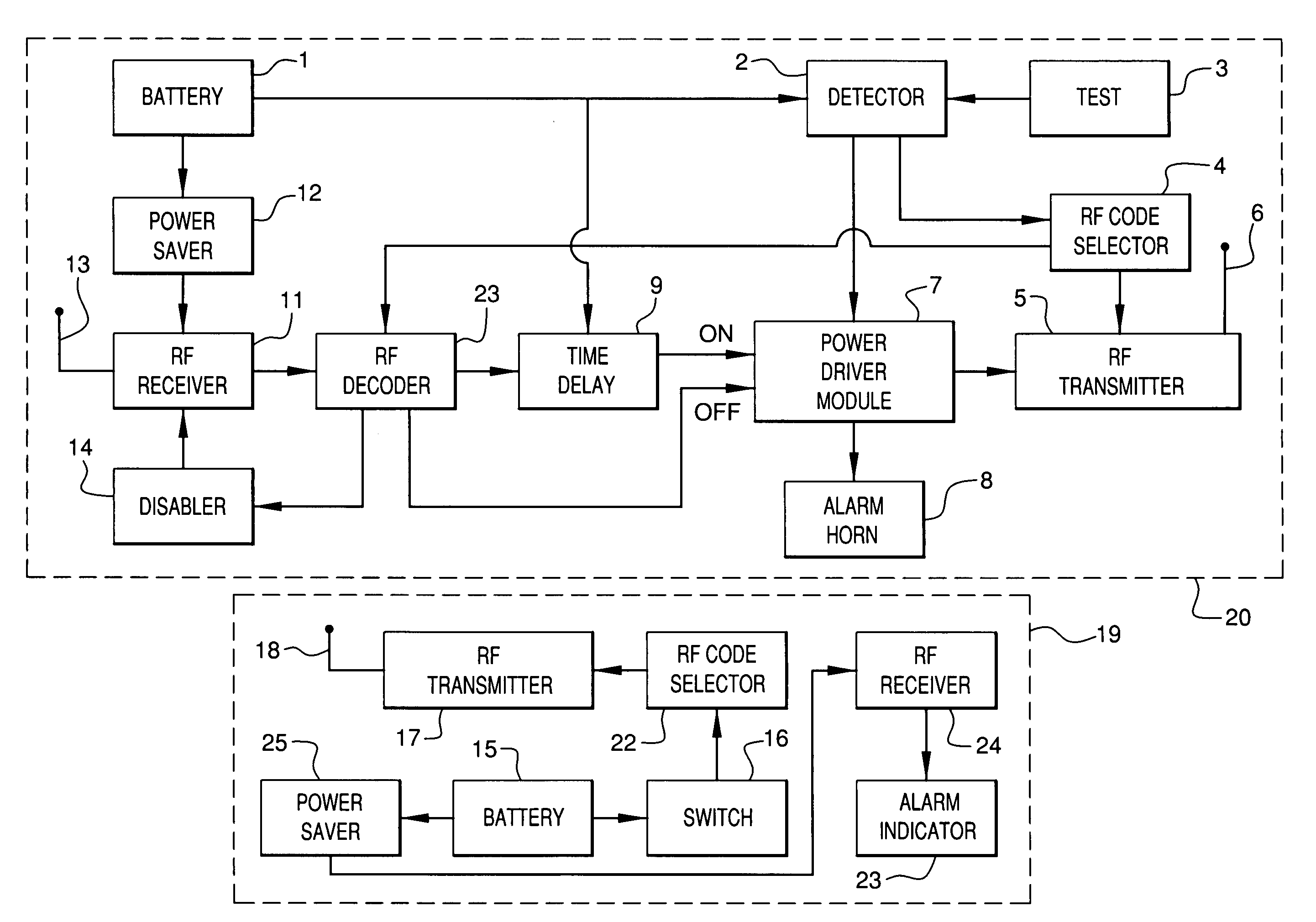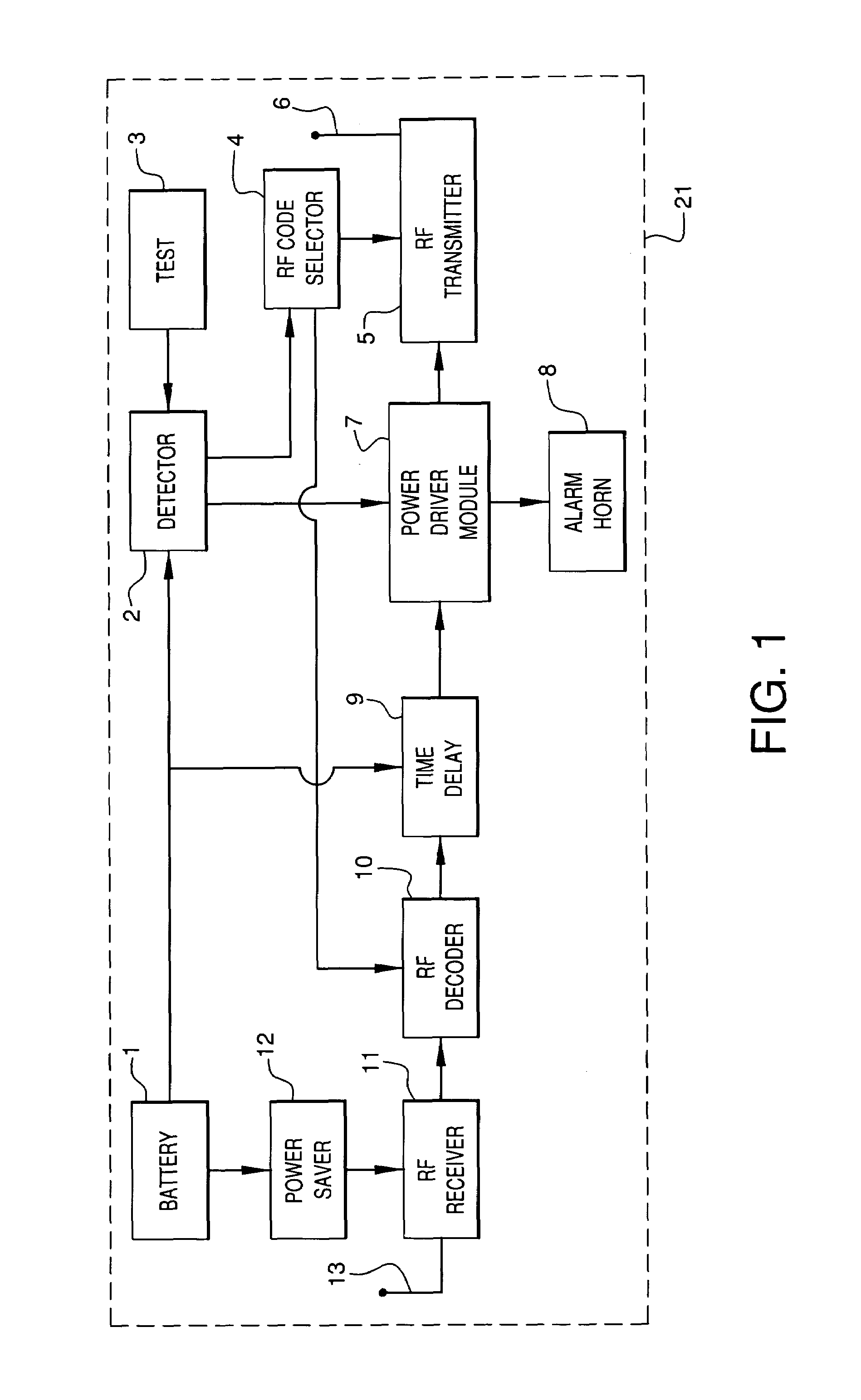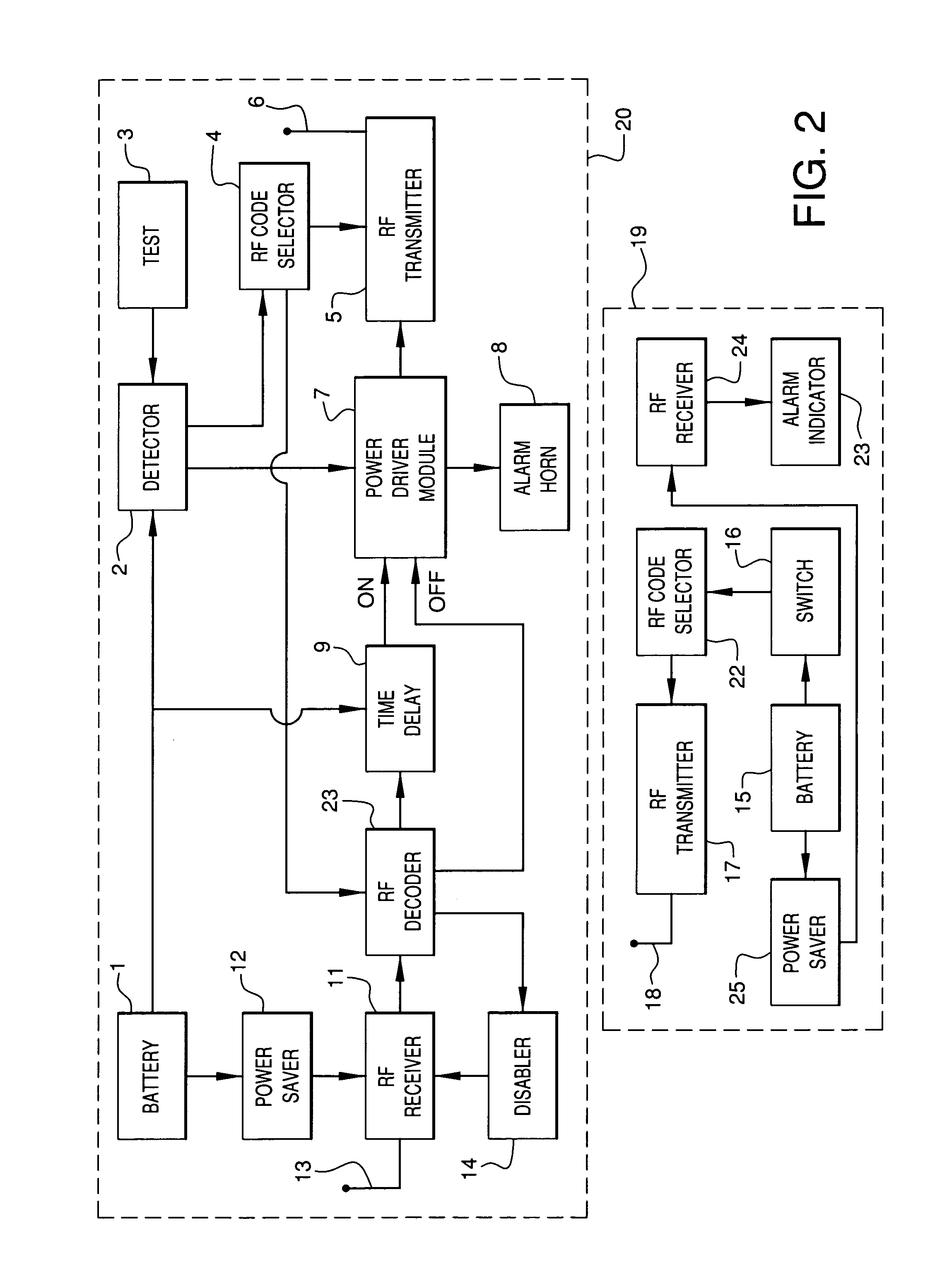Alarm network
a technology of alarm network and alarm network, which is applied in the direction of fire alarms, electric signalling details, instruments, etc., can solve the problems of low installation cost, high installation cost, and loss of valuable time to respond to fires, and achieve the effect of enhancing the alarm network and eliminating false alarms
- Summary
- Abstract
- Description
- Claims
- Application Information
AI Technical Summary
Benefits of technology
Problems solved by technology
Method used
Image
Examples
Embodiment Construction
[0011]Referring in detail to the drawings, the reference numerals herein refer to the like numbered parts in the drawings.
[0012]The alarm network consist of two or more independent alarm devices, each having the capability to detect one or more problems, such as smoke, toxic gas, fire, high or low temperatures, water or other abnormal environmental conditions. FIG. 1 shows a block diagram of a single alarm device 21 of the alarm network in its simplest configuration. A 9 VDC alkaline battery 1 powers the device. The detector 2 is a commercially available smoke, gas, temperature, or water sensor designed to differentiate between normal and abnormal conditions. Upon detecting an abnormal condition, the detector 2 sends a signal to the power driver module 7 to energize the alarm horn 8 to issue a constant blaring audible alarm, and to maintain it as long as detector 2 is detecting the abnormal condition. Concurrently with issuing the audible alarm, detector 2 also sends a signal throug...
PUM
 Login to View More
Login to View More Abstract
Description
Claims
Application Information
 Login to View More
Login to View More - R&D
- Intellectual Property
- Life Sciences
- Materials
- Tech Scout
- Unparalleled Data Quality
- Higher Quality Content
- 60% Fewer Hallucinations
Browse by: Latest US Patents, China's latest patents, Technical Efficacy Thesaurus, Application Domain, Technology Topic, Popular Technical Reports.
© 2025 PatSnap. All rights reserved.Legal|Privacy policy|Modern Slavery Act Transparency Statement|Sitemap|About US| Contact US: help@patsnap.com



